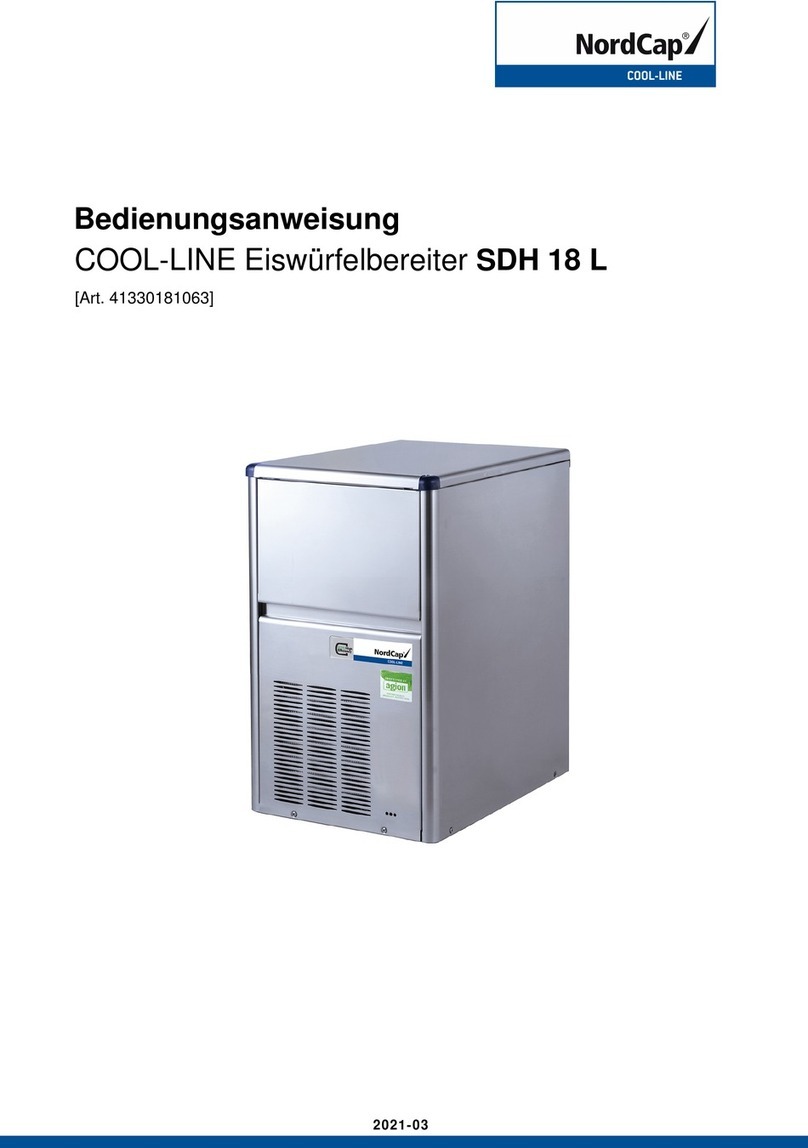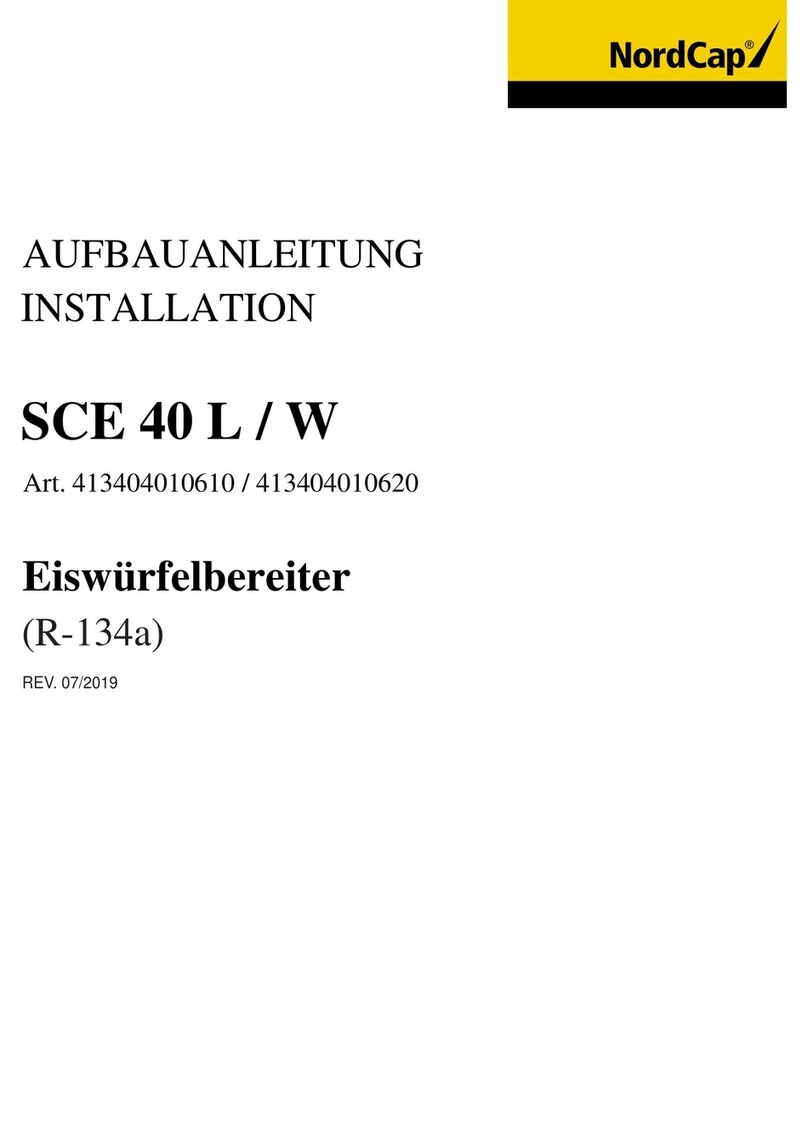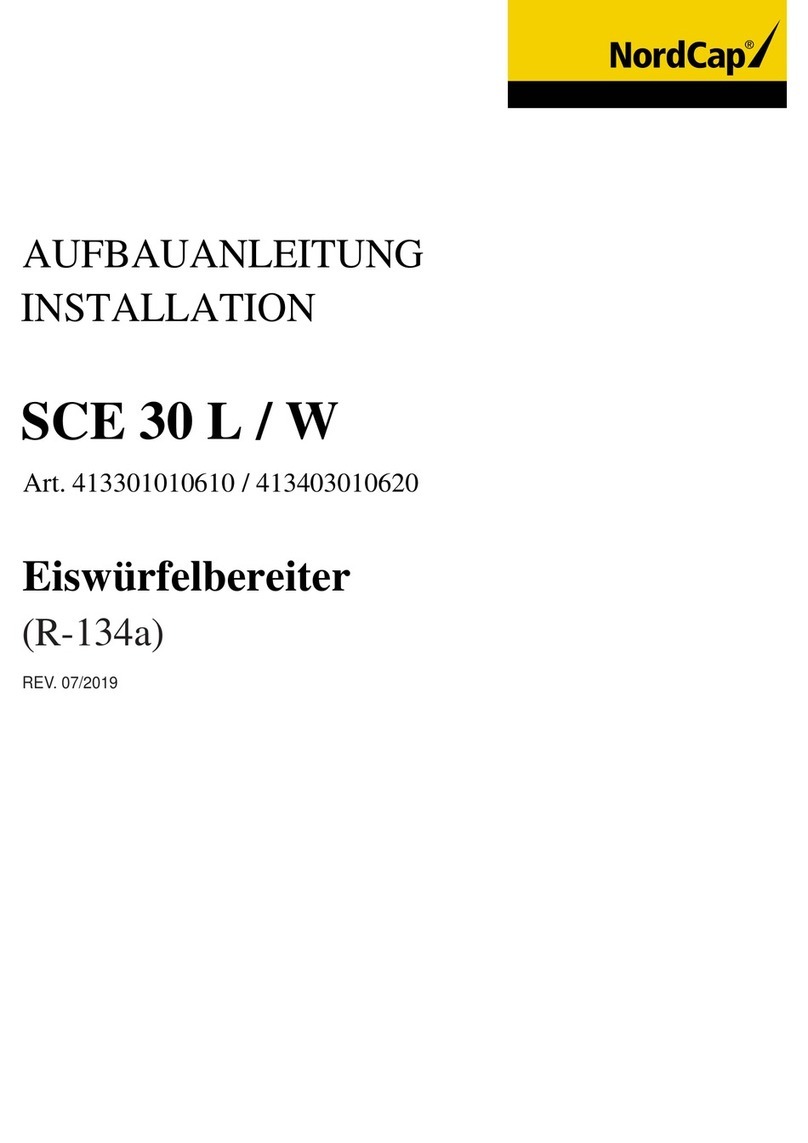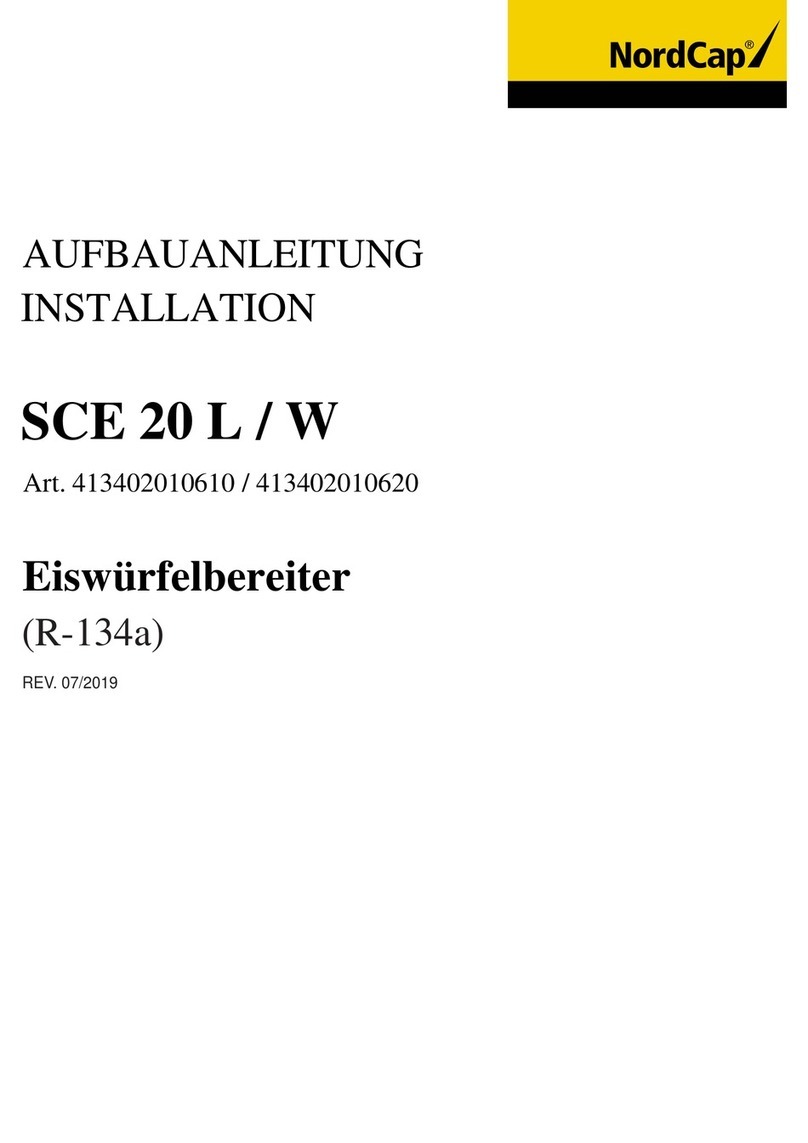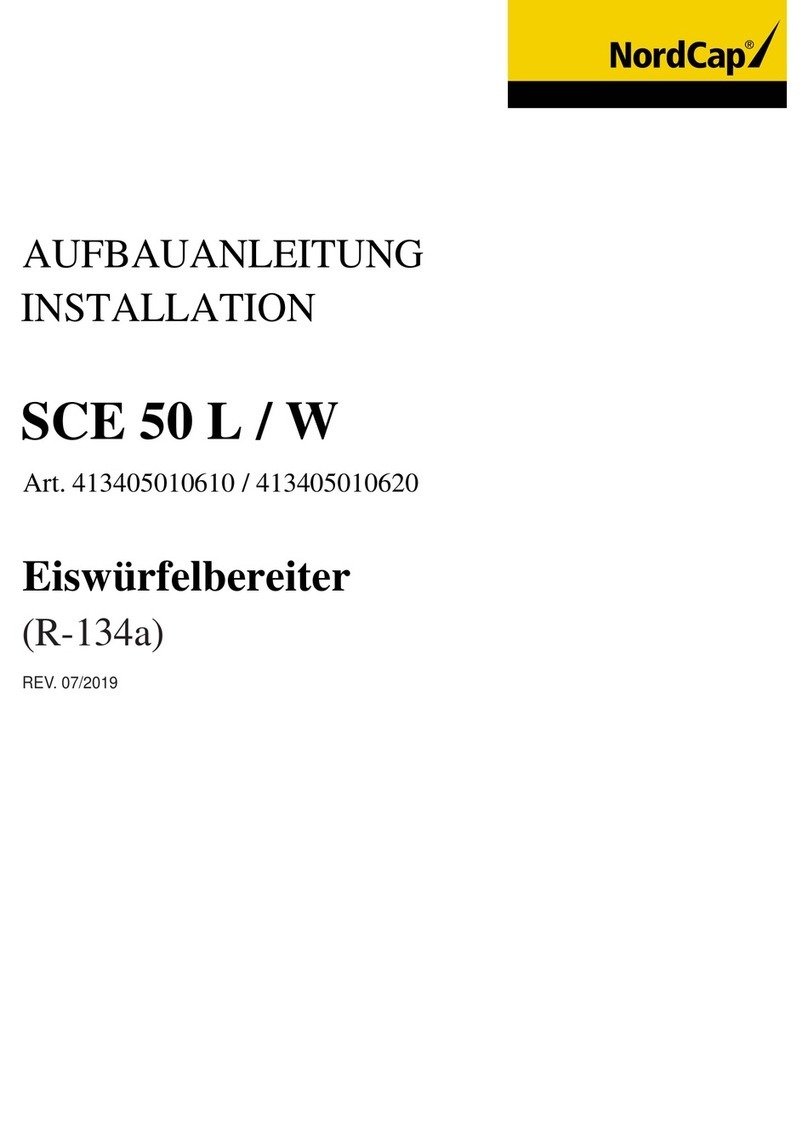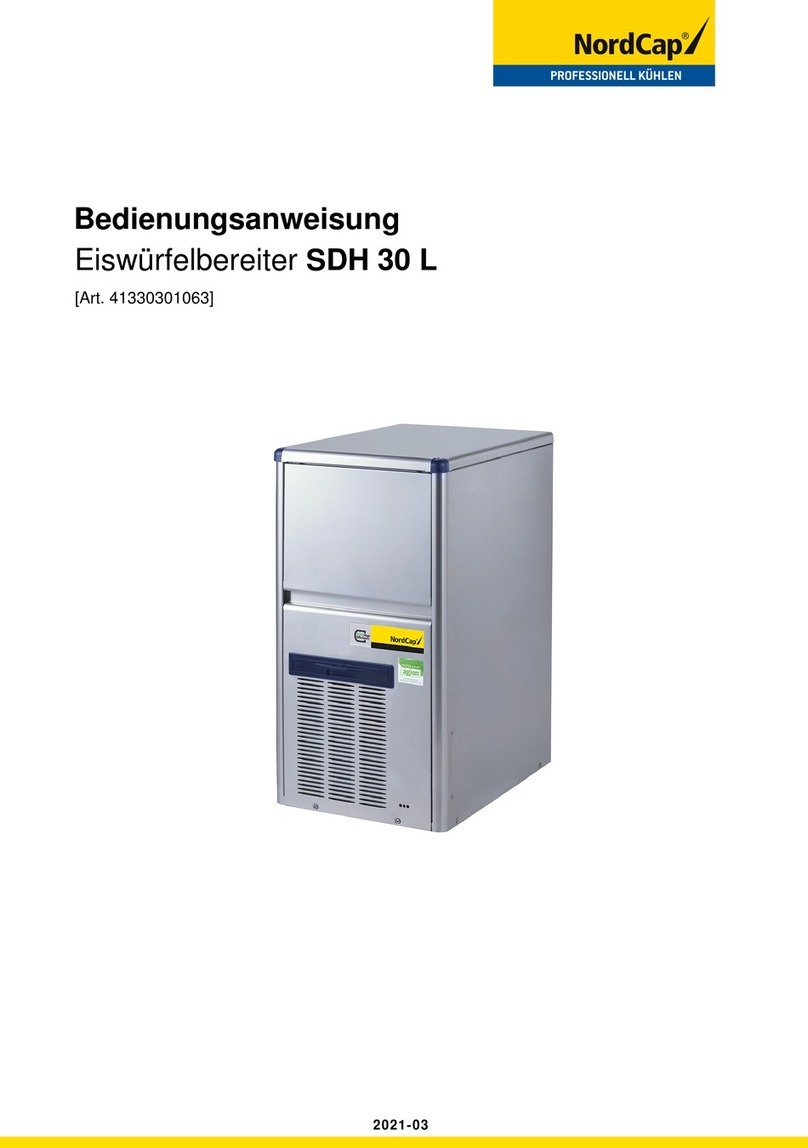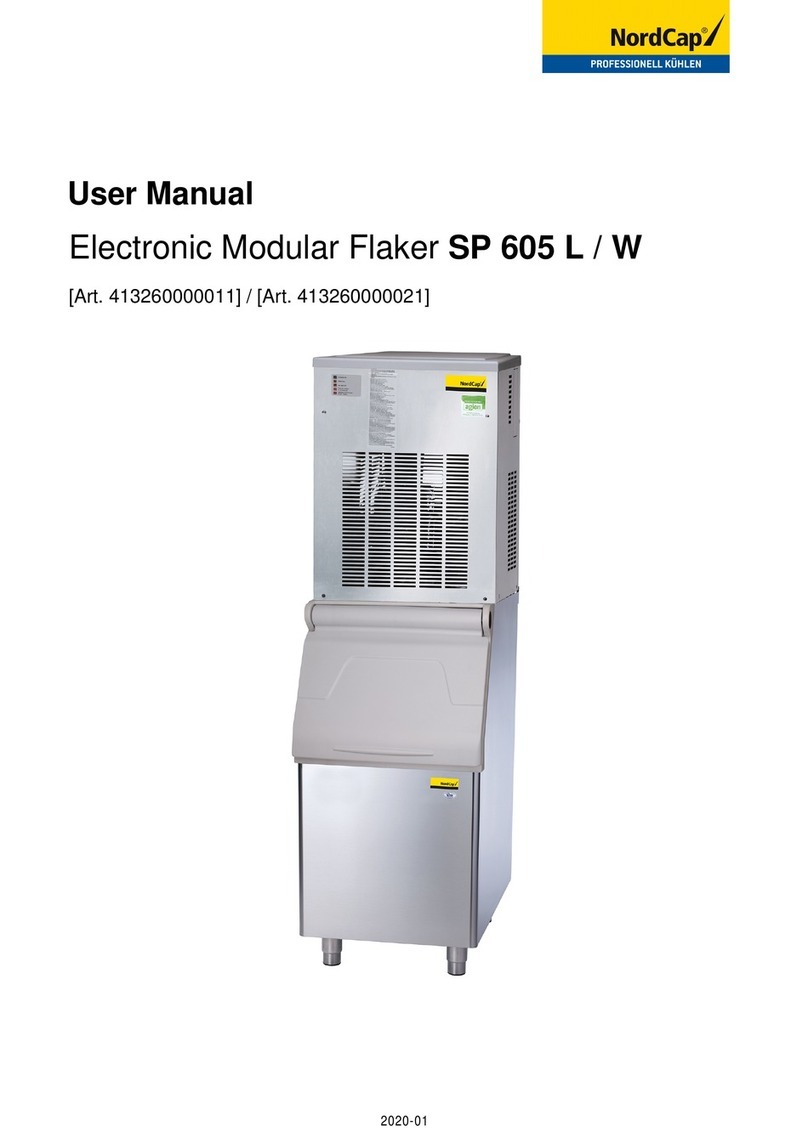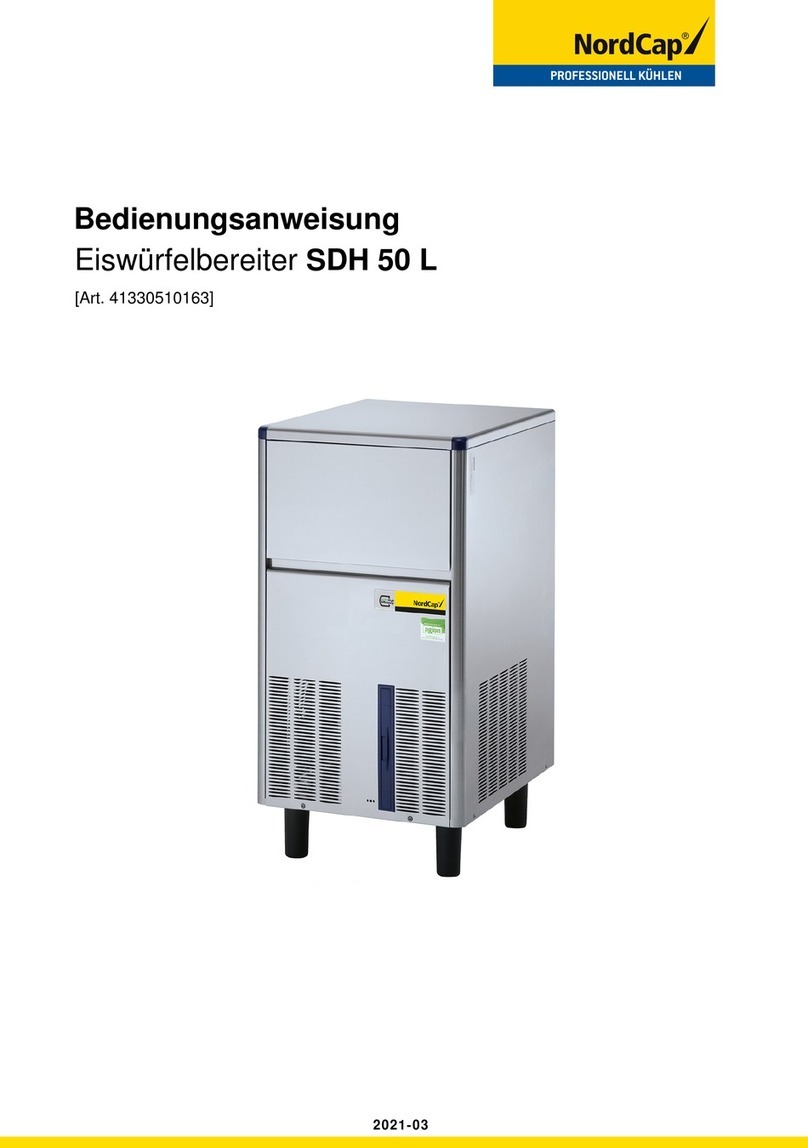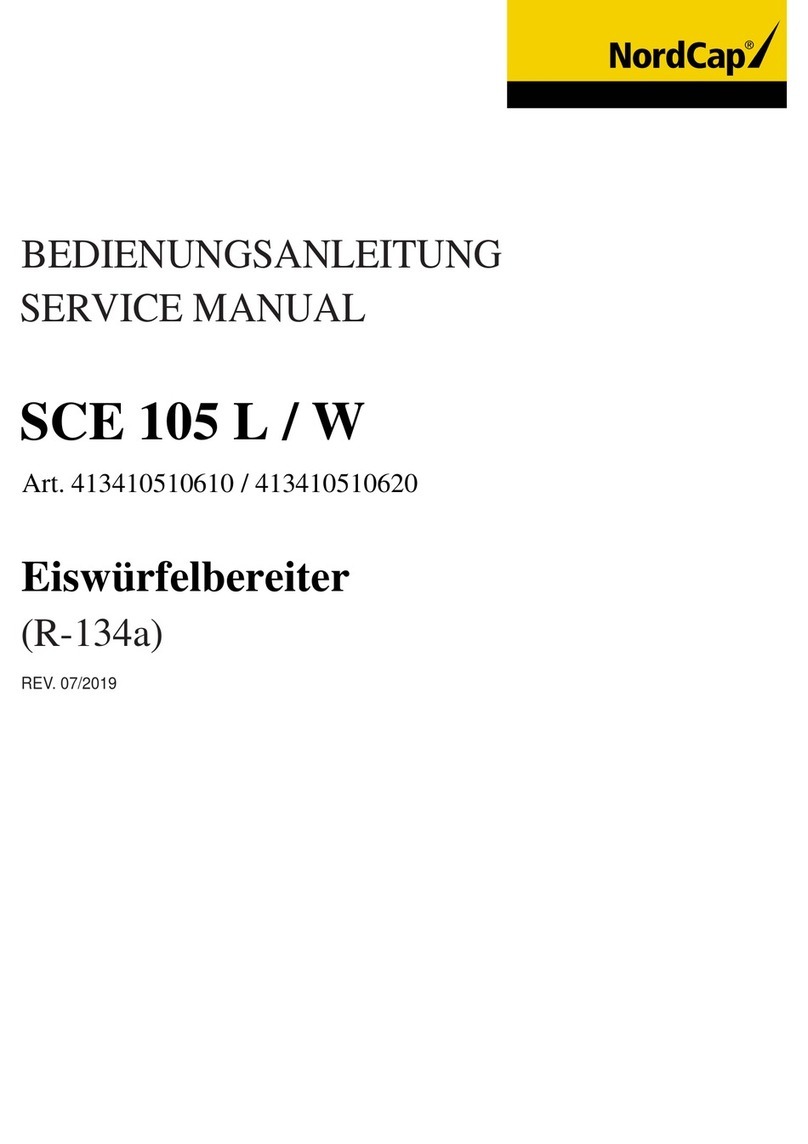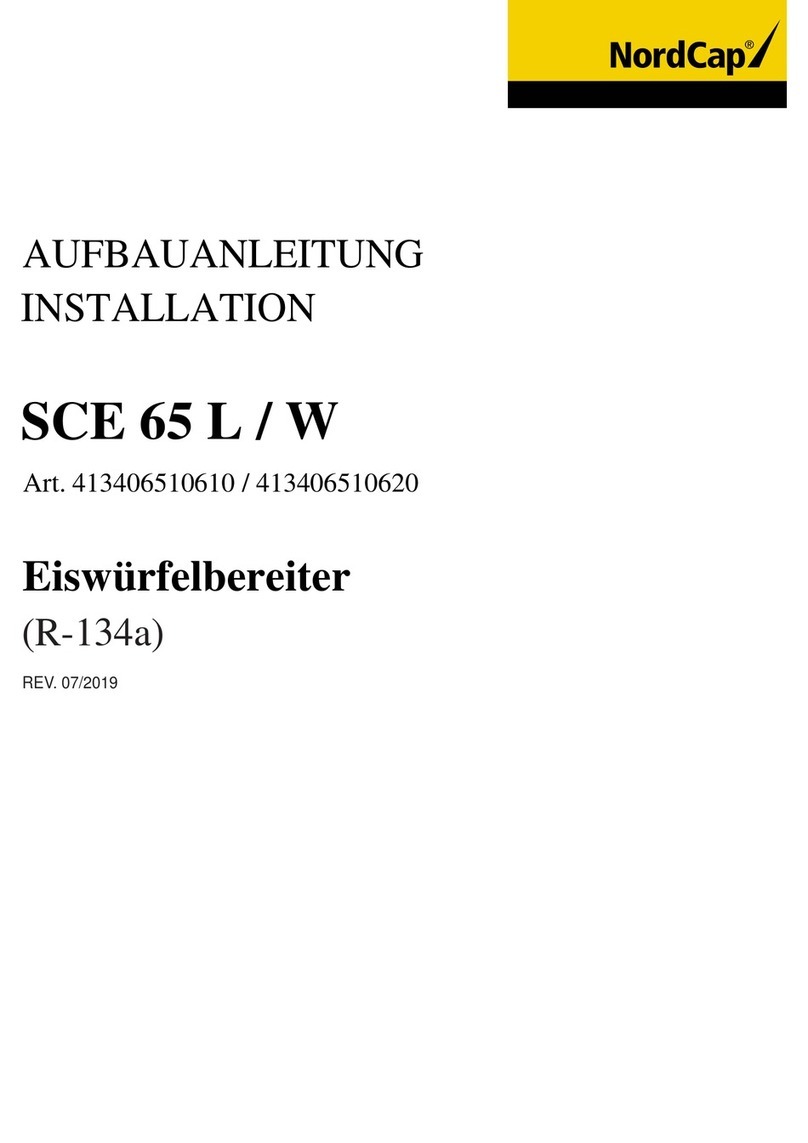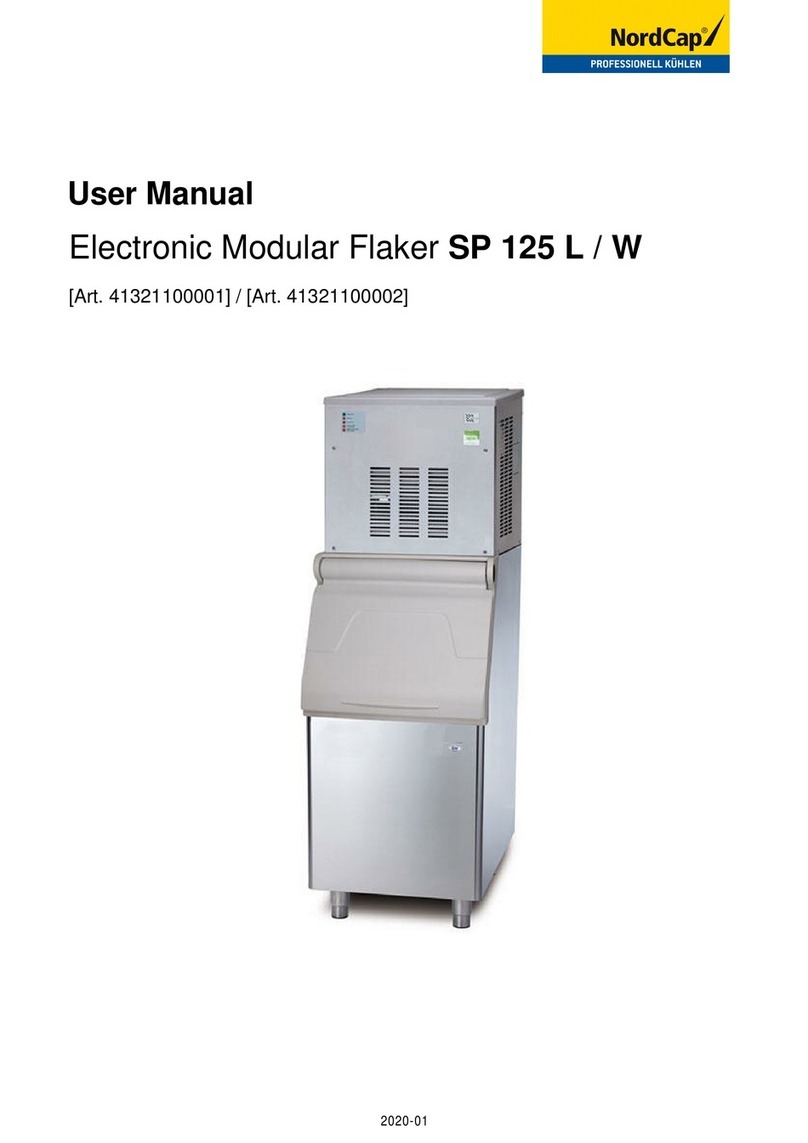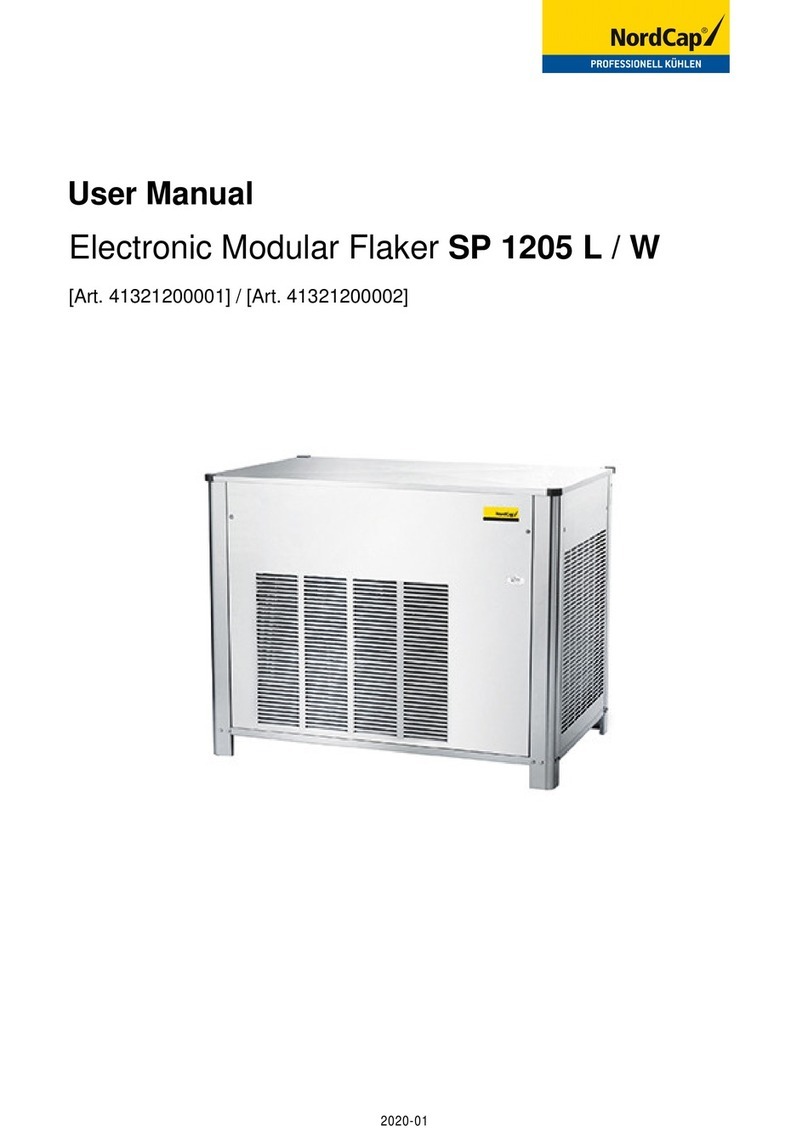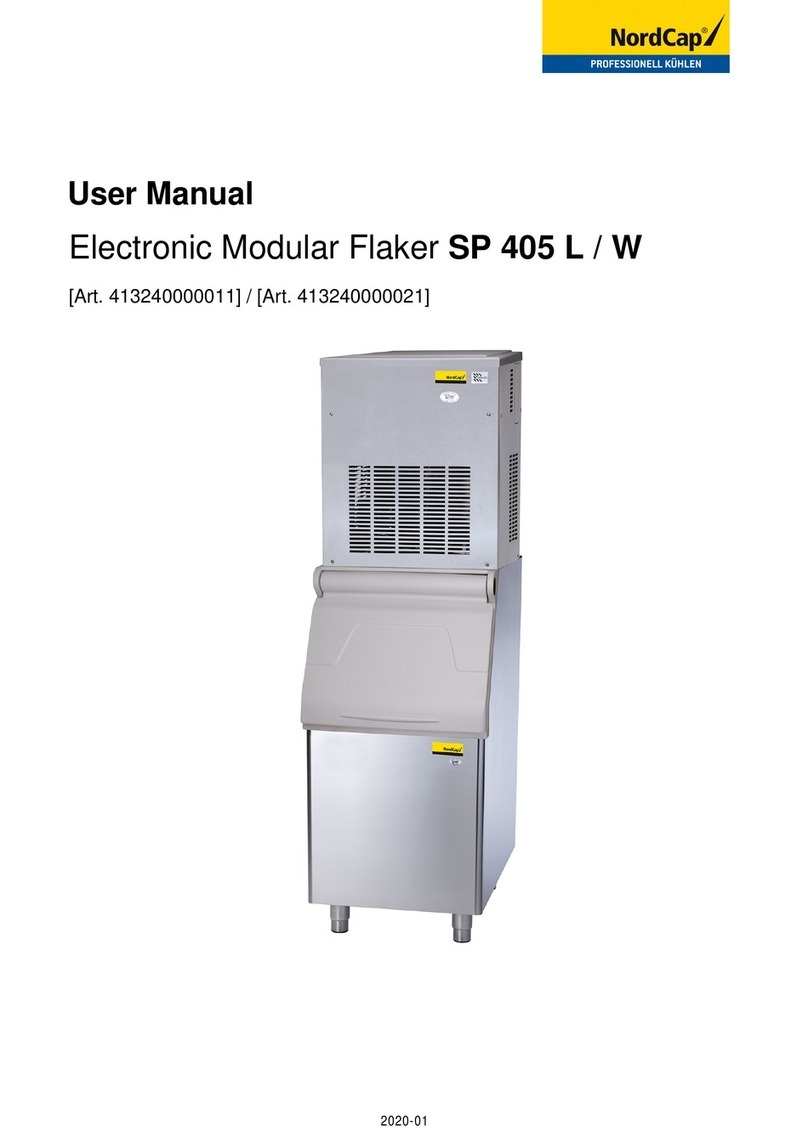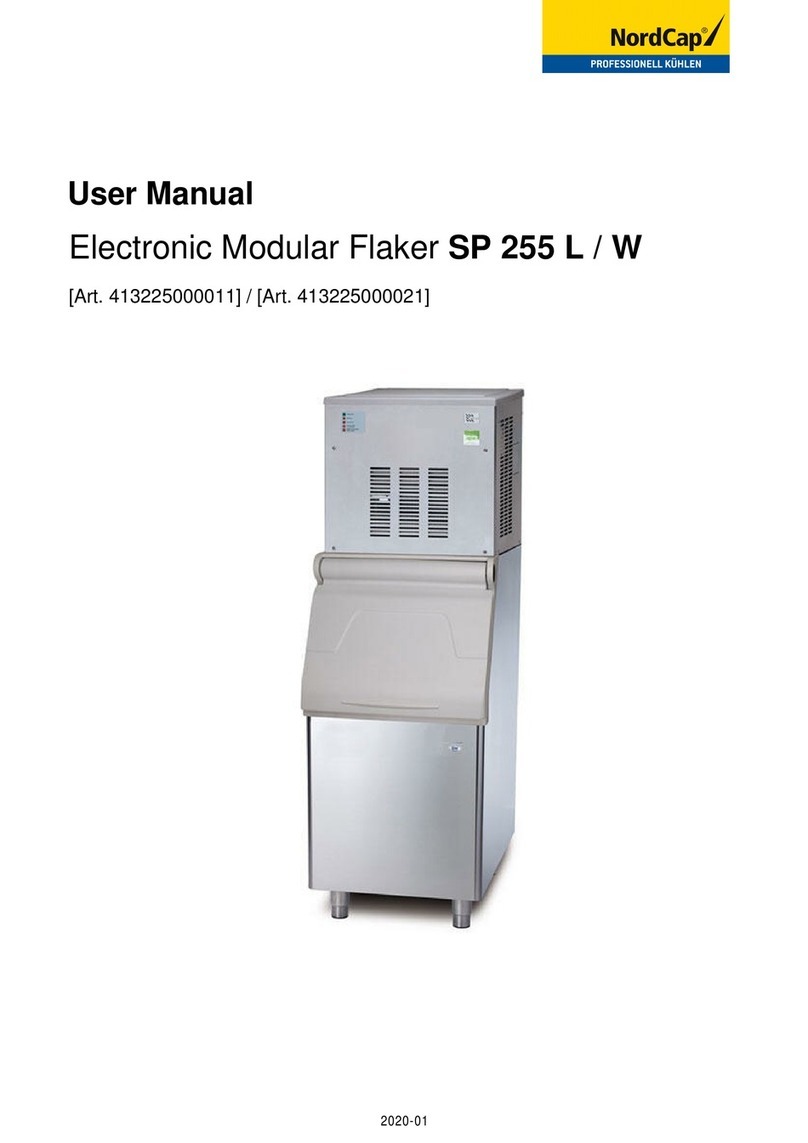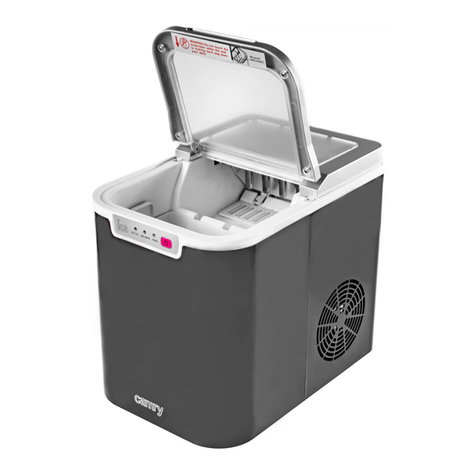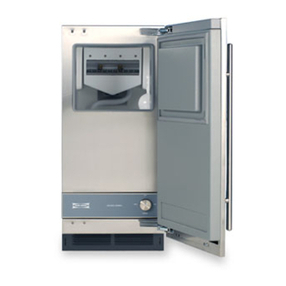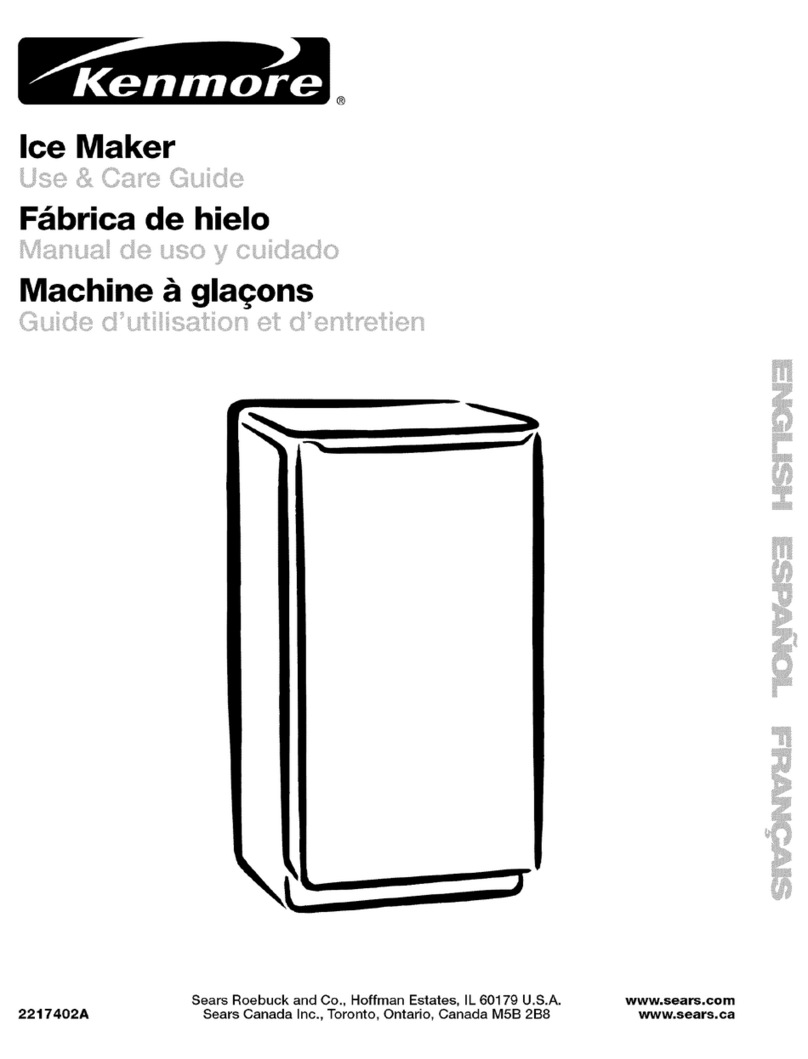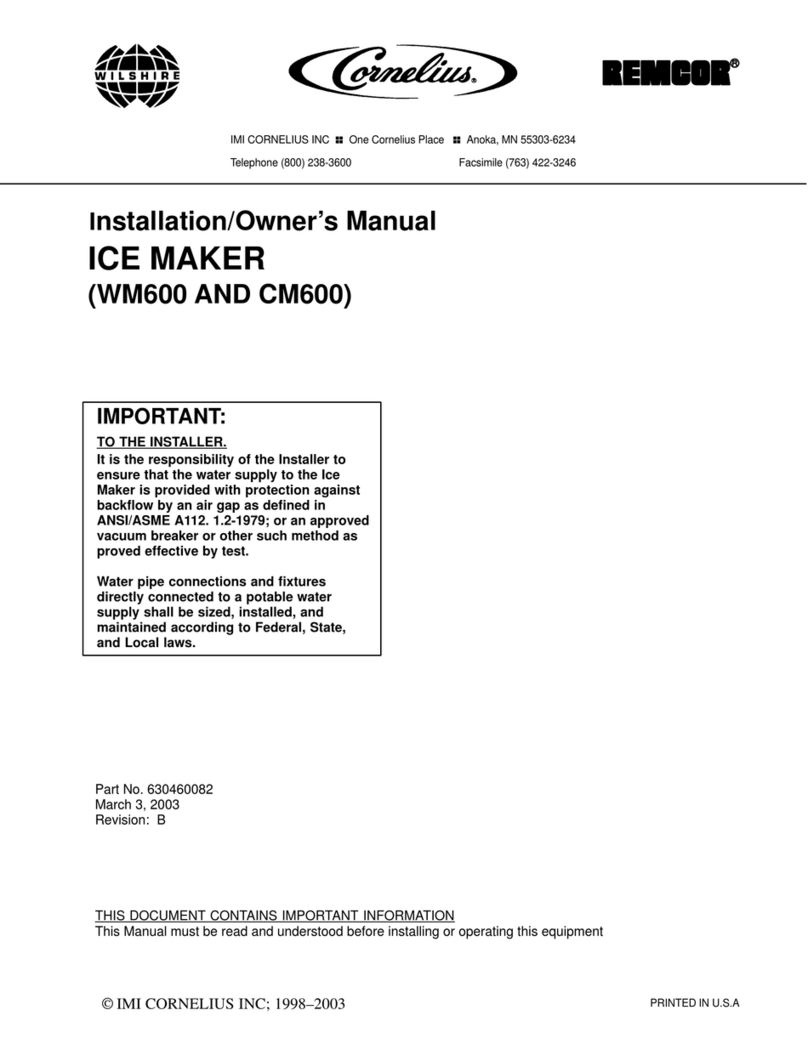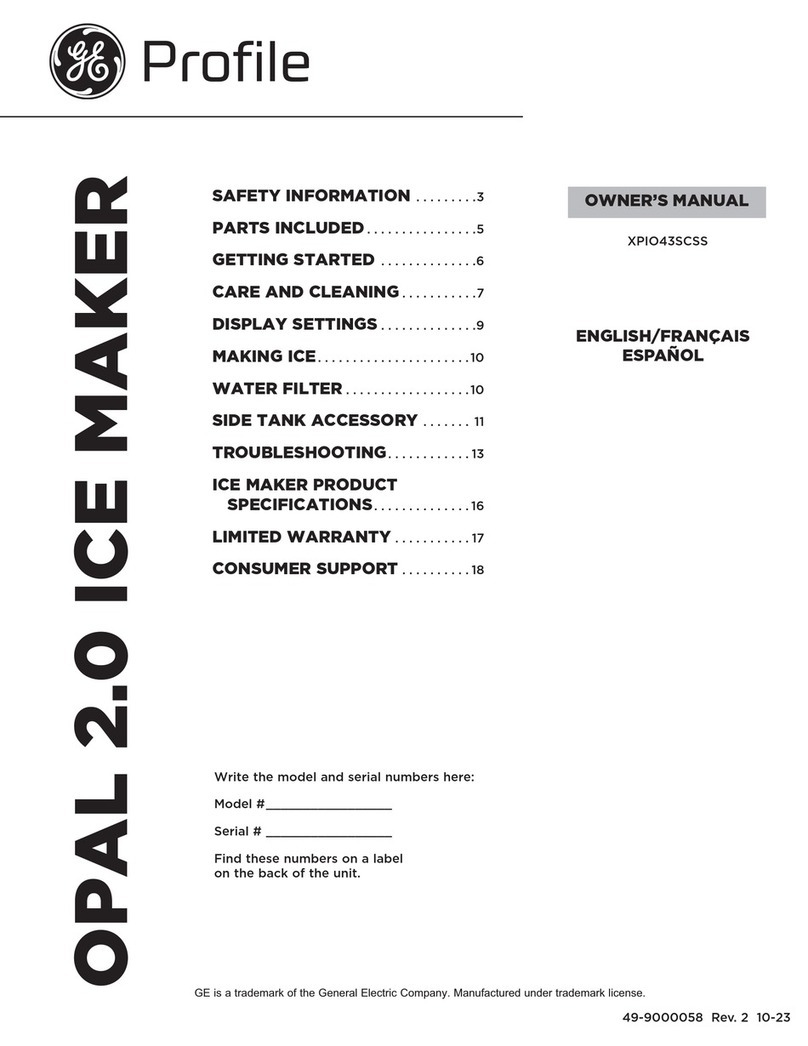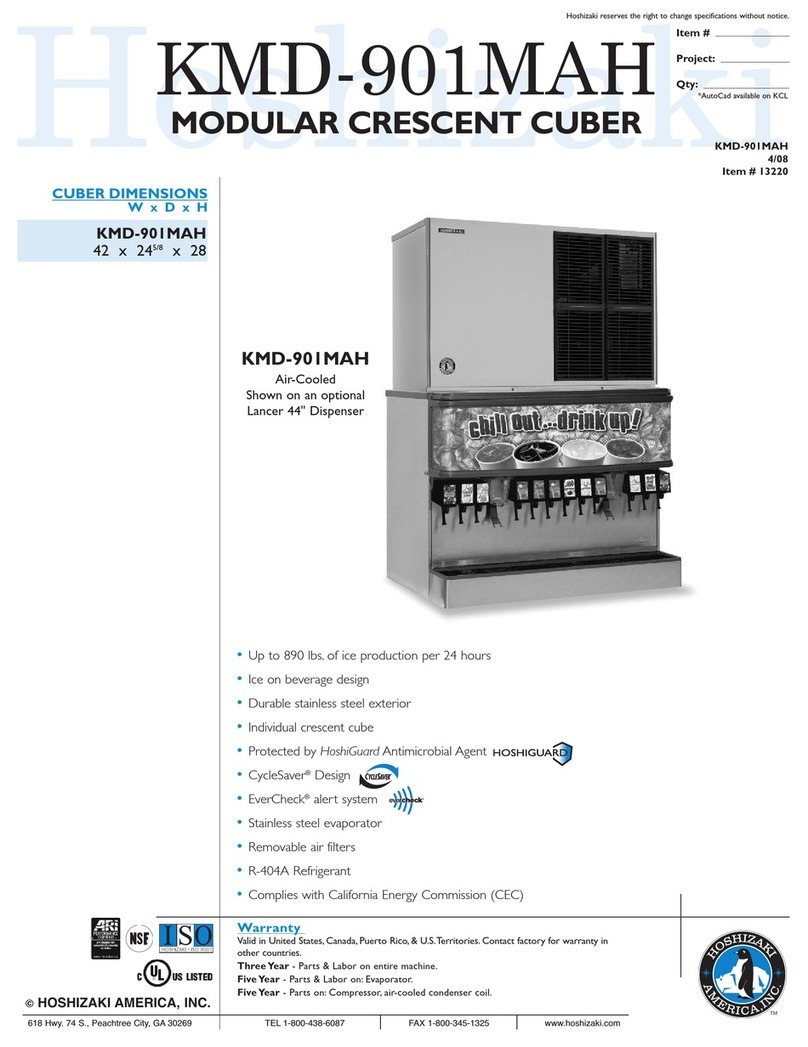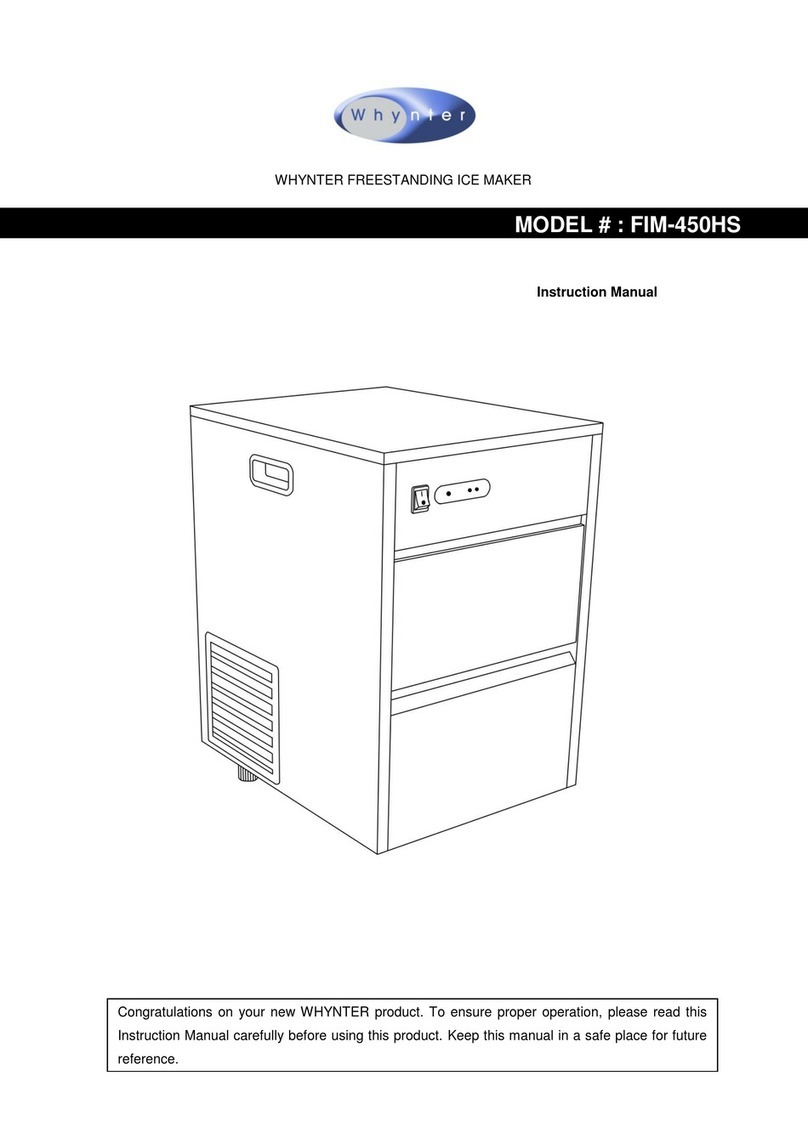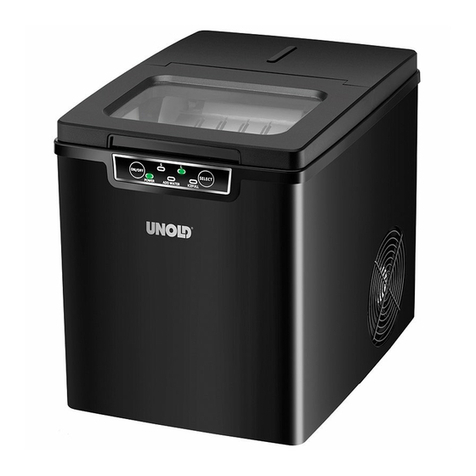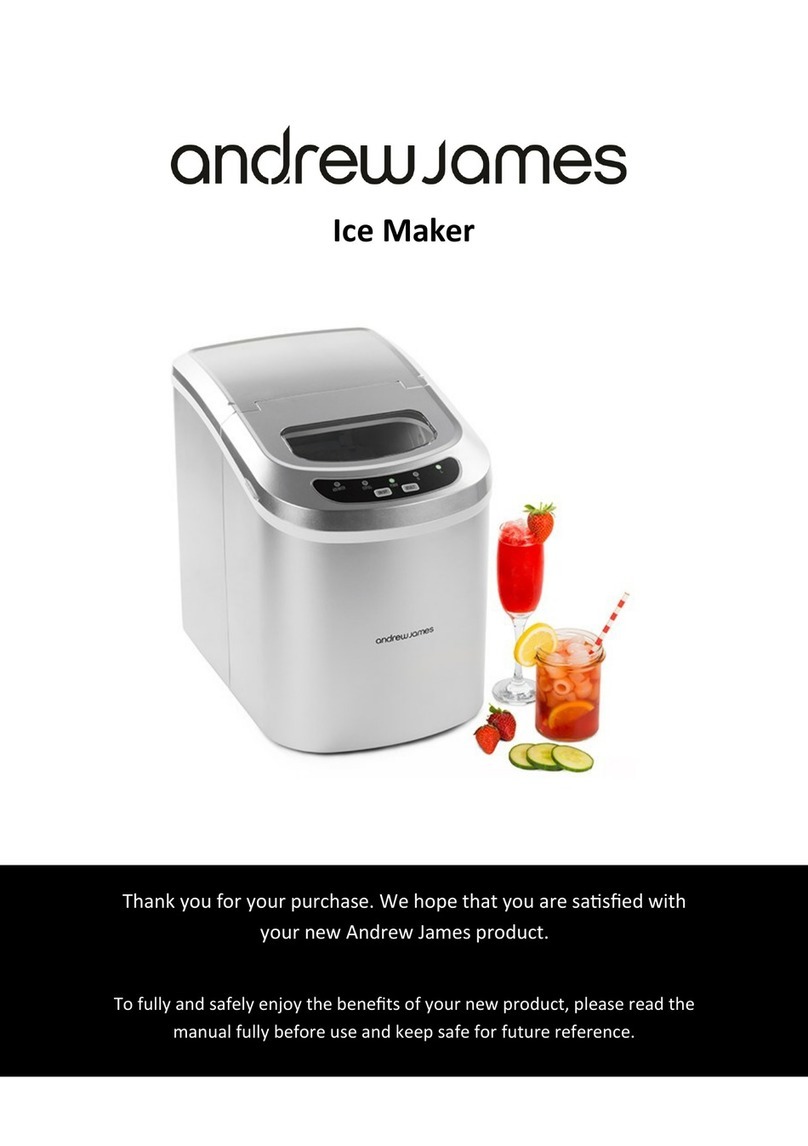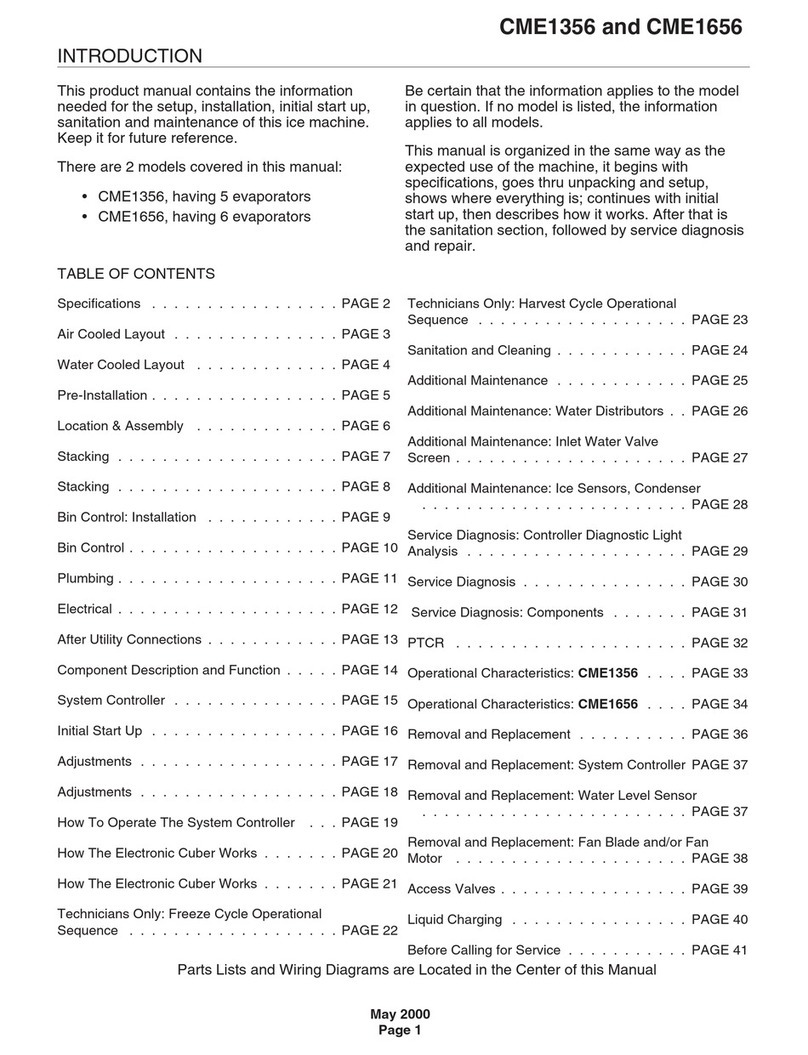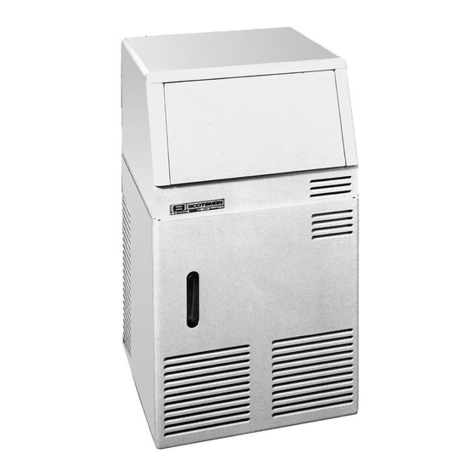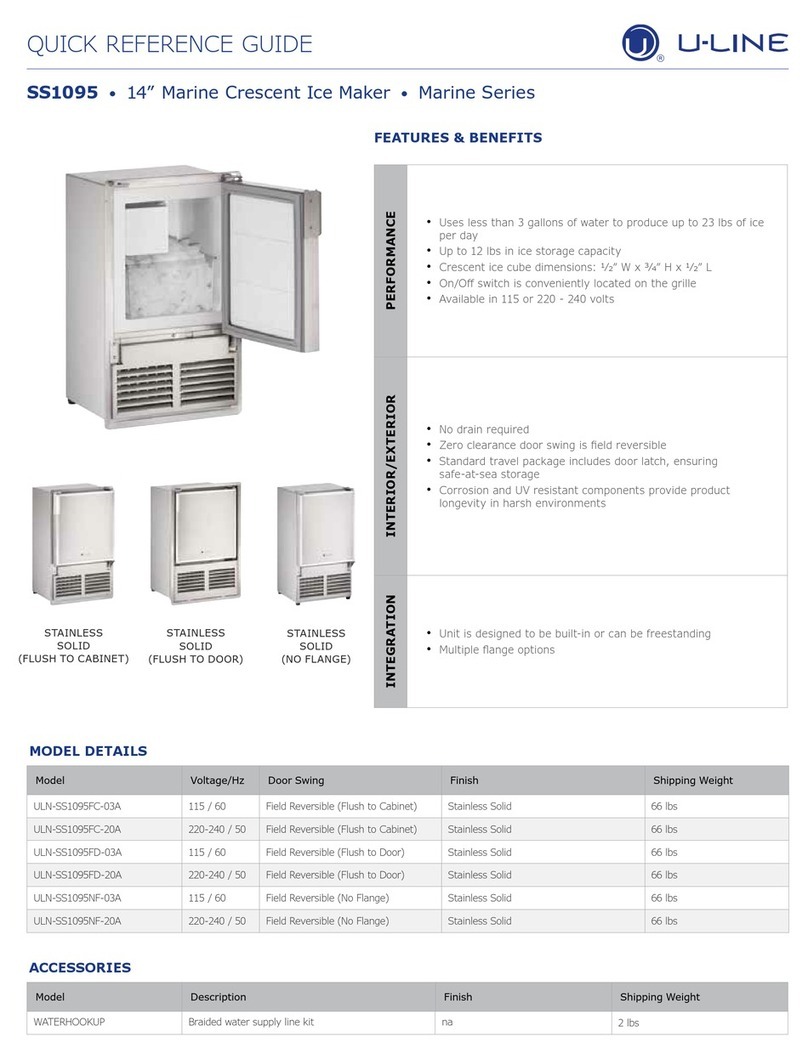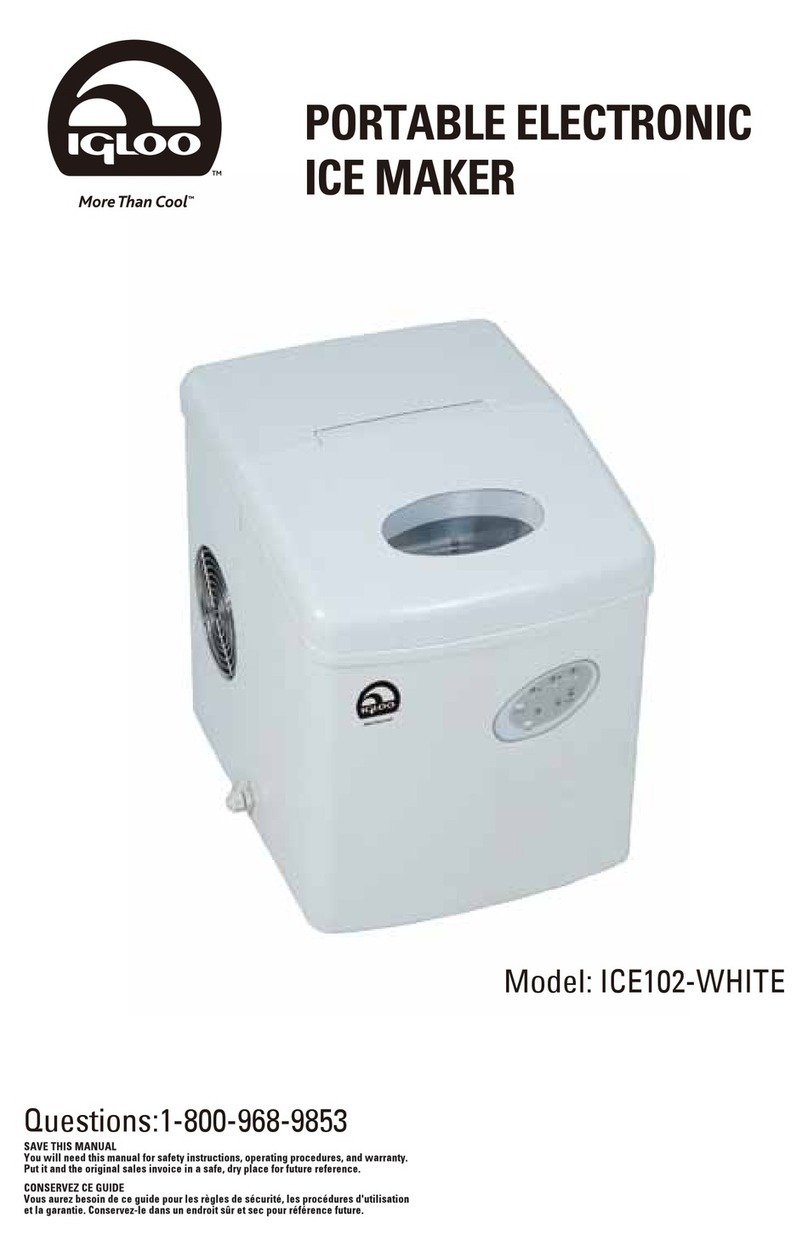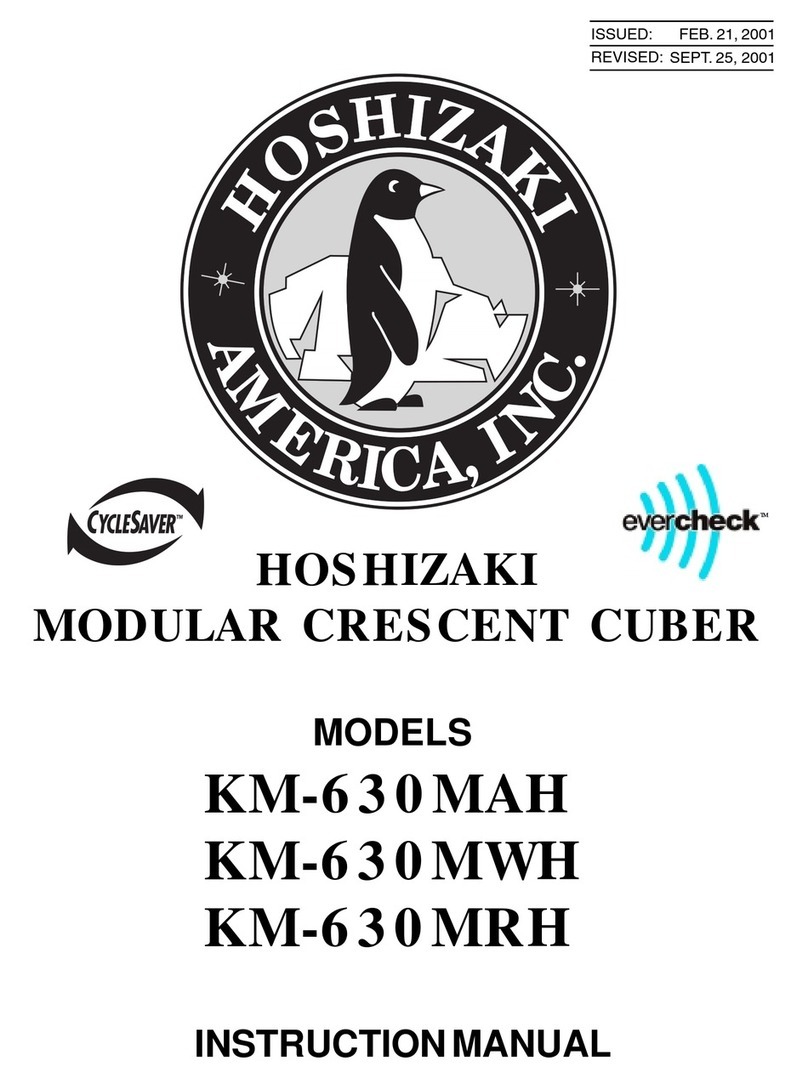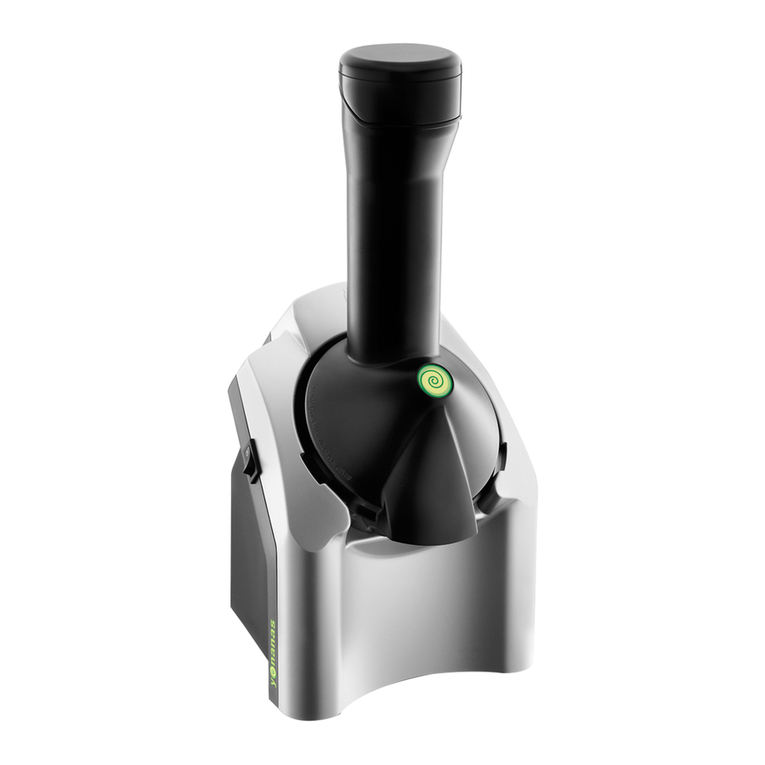
DurchdasWasser,dasindieAuffangvorrichtung
/ den Behälter gelangt, wird das überschüssige
Wasser des vorherigen Gefrierzyklus verdrängt
und fließt in das Überflußrohr. Dieser Überfluß
begrenzt das Niveau der Wasserauffang-
vorrichtung.DasaufgefangeneWasserwirddazu
verwendet, um den nächsten Satz Eiswürfel zu
produzieren.
DasKühlmittelwirdalsHeißgasvomKompressor
abgeschiedenundgelangtdurchdasHeißgas–
Magnetventil direkt in die am Kondensor vorbei
führende Verdunsterschlange.
Der Heißgasumlauf in die Verdunsterschlange
erwärmtdie Kupferformen, sodaß die Eiswürfel
ausgeworfenwerden.DieausdenKegelformern
ausgeworfenen Eiswürfel fallen durch die
Schwerkraft auf eine geneigte Würfelrutsche,
gelangen durch die Öffnung mit dem Vorhang
undfallenindenEiswürfel–Vorratsbehälter.Bei
den SCE 20 - 30 - 40 - 50 Modelle wenn die
Temperatur des Temperaturfühlers des
Verdunstertermostats eine Höhe von +3 ±4°C
erreicht, werden dessen elektrische Kontakte
zurückaufdievorherigePositionbewegtundein
neuer Gefrierzyklus wird aktiviert. Sowohl das
Heißgas - als auch das Wassereinlaß -
Magnetventil werden deaktiviert (geschlossen).
Bei den SCE 65 - 90 - 105 Modelle, wenn der
Mikroschalter des Timers die untere Seite des
Nockens beendet ist und wieder betätigt
wird,
eine neue Gefrierphase beginnt (Heisgassventil und
Magnetventil werden deaktiviert - geschlossen).
HINWEIS:
Bei den SCE 20 - 30 - 40 - 50
Modelle die Länge des Abtau- /
Auswerfzyklus‘istabhängig(nichteinstellbar)
von der Umgebungstemperatur (kürzer bei
hoherUmgebungstemperaturundlängerbei
niedriger Umgebungstemperatur).
Beschreibung der Komponenten
A. Wasserpumpe
DieWasserpumpearbeitetkontinuierlichwährend
desGefrierzyklus‘.DiePumppumptdasWasser
ausderAuffangvorrichtungindasSprühsystem.
Durch die Sprühdüsen wird das Wasser in die
Kegelformer gesprüht, wo es zu kristallklaren
Eiswürfeln gefriert.
B. Wassereinlaß - Magnetventil - 3/4"
Steckverbindungsstück
Das Wassereinlaß - Magnetventil wird nur
während des Abtauzyklus aktiviert.
Wenn es aktiviert ist, läßt es eine bestimmte
Menge zufließenden Wassers über die
Verdunstervertiefung fließen, um somit
zusammen mit dem Heißgas für das Abtauen
des Eises zu sorgen. Das Wasser, daß über die
Verdunstervertiefung läuft, tropft, bedingt durch
dieSchwerkraft,durchdieTropflöcherderPlatte
in die Auffangvorrichtung.
Bei den SCE 20 - 30 - 40 - 50 - 65
wassergekühlten Versionen ist das
Wassereinlaß-Magnetventilmit einem Einlaß
und zwei Auslässen mit zwei voneinander
getrenntenTopfmagnetenausgestattet,wobei
der erste (für die Eisproduktion) durch die
Kontakte 3 – 2 des Verdunsterthermostats
aktiviert wird und der zweite (wassergekühlter
Kondenser) durch eine spezielle Hochdruck-
steuerung.
C. Heißgas – Magnetventil
Das Heißgas – Magnetventil besteht
hauptsächlichauszweiTeilen:DemVentilkörper
undderVentilspule.DasHeißgas-Magnetventil
befindet sich and der Heißgasleitung und wird
von den Kontakten 3 – 2 des Verdunster-
thermostats während des Abtauzyklus aktiviert.
Während des Abtauzyklus wird das die Heißgas
–Ventilspuleaktiviert,undziehtsomitdenKolben
desHeißgas–Magnetventilsan.Hierdurchkann
dasHeißgas,dasvomKompressorabgeschieden
wird,direktindieVerdunsterschlangegelangen,
um dort die geformten Eiswürfel durch Antauen
zu lösen.
D. Vorratsbehälterthermostat
Das Steuerteil des Vorratsbehälterthermostats
befindet sich vorne auf der Schalttafel hinter der
abnehmbaren Abdeckung.
Das Fühlrohr des Thermostats befindet sich in
einem Temperaturfühlhalter an der Seitenwand
des Eisauffangbehälters, wo es den Eisbereiter
automatisch abschaltet, wenn der Fühler in
BerührungmitdemEiskommtunddenEisbereiter
automatisch wieder aktiviert, wenn das Eis
entferntwird.DiewerkseitigenEinstellungensind
1°C AUSSCHALTEN und 4°C EINSCHALTEN.
E. Würfelgrößensteuerung
(Verdampferthermostat)
SCE 20 - 30 - 40 - 50
Die Würfelgrößensteuerung (Verdampfer-
thermostat) sitzt vorne auf der Schalttafel hinter
der abnehmbaren Abdeckung. Sie ist
hauptsächlich
eine umgekehrt fungierende
Temperatur-steuerung, die die Kontakte 3 – 2
schließt, wenn die Temperatur fällt und die
gegenüberliegenden
Kontakte3–4schließt,wenn
die Temperatur steigt.
Der Temperaturfühler befindet sich in einem
Kunststoffrohr (Fühlerhalter), der von zwei
Klemmen direkt an der Verdunsterschlange
befestigtist.DieseSteuerungbestimmtdieLänge
desGefrierzyklusunddemzufolgeauchdieGröße
der Eiswürfel.
EineniedrigereEinstellungresultiertingrößeren
Eiswürfeln (Übergröße) während eine höhere
Einstellung geringere Eiswürfeln (flache Würfel)
zur Folge hat. Wenn die Kontakte 3 – 2
geschlossensind,aktiviertsiedieKomponenten
des Abtau- oder Auswerfzyklus‘.
Die Würfelgrößensteuerung wird werkseitig
eingestellt (Knopf in der Position mit dem
schwarzenPunkt)undmußnichtweitereingestellt
werden, sofern die Temperaturanforderungen
zwischen 20 und 30°C eingehalten werden (70
und 90°F)
SCE 65 - 90 - 105
Der Verdampferthermostat mit seinem
empfindlichenFühlerinKontaktmitdemAussen
rohr des Verdampfers "liest" die Kühlmittel-
Verdampfungstemperatur (die während der
Gefrierphase sinkt) und wenn diese den

